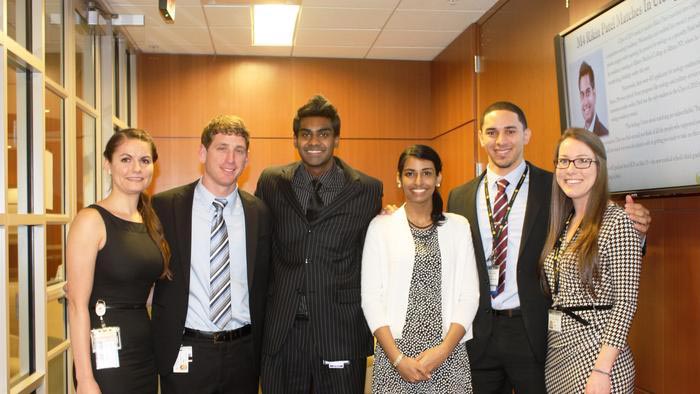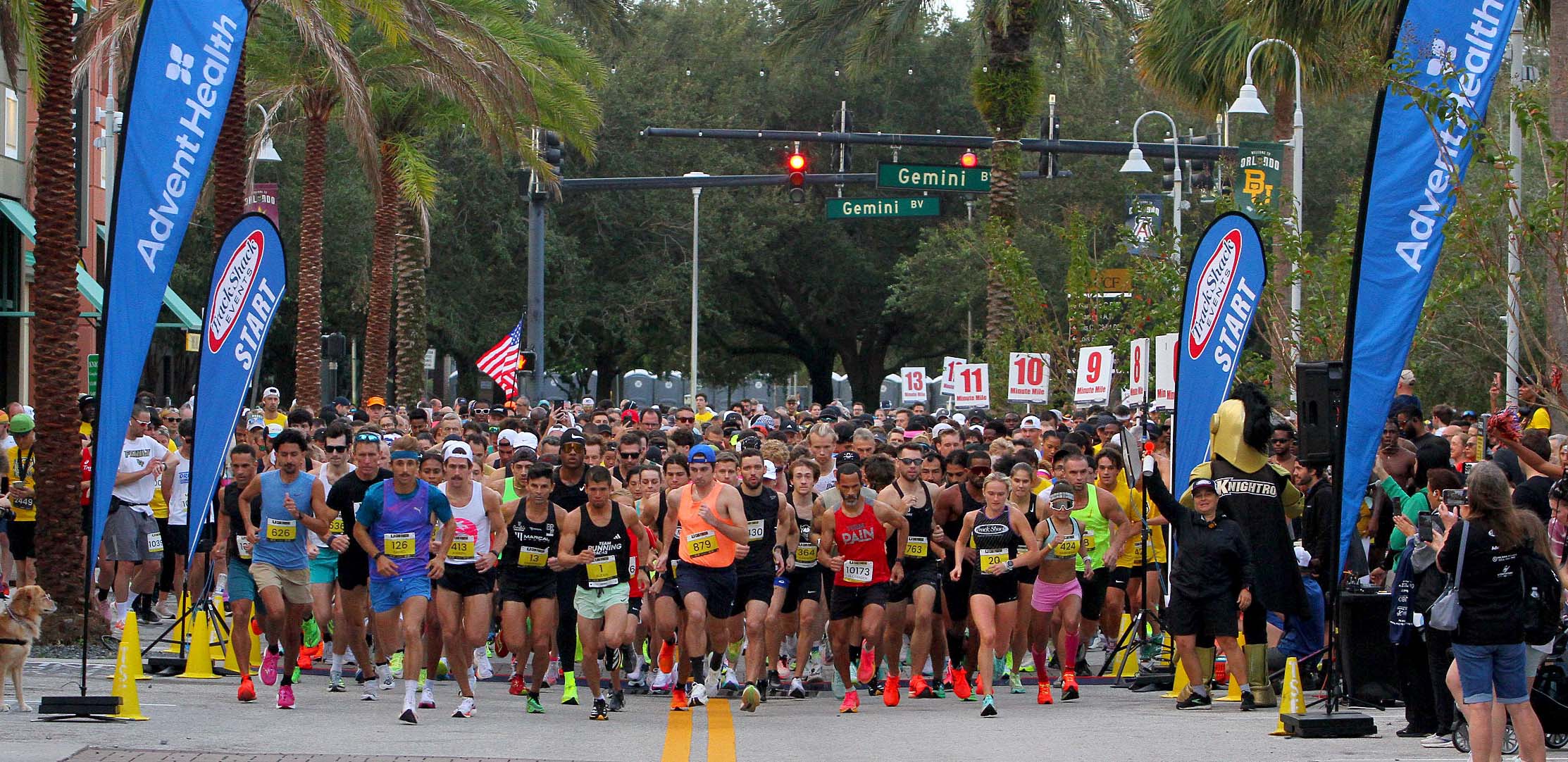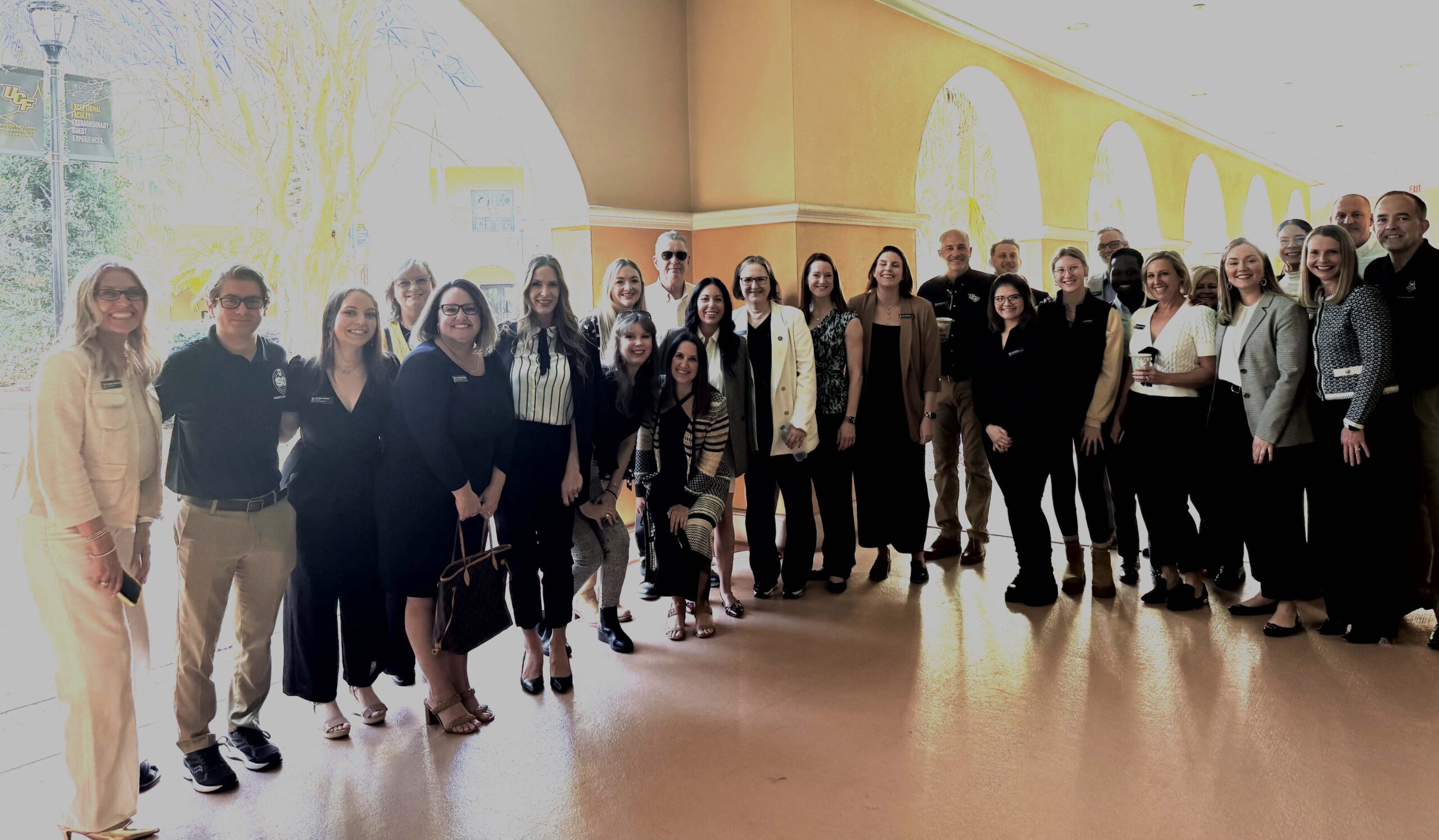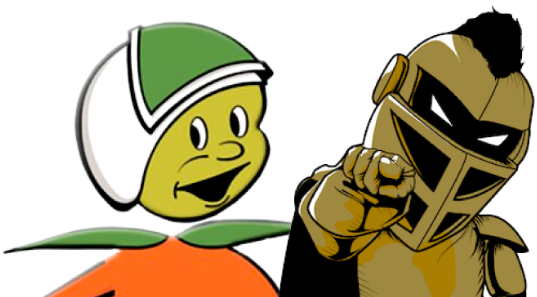Body of Lessons
First-year UCF medical students dissect cadaver to discover cause of death

By Naseem S. Miller
Orlando Sentinel
For 17 weeks, the cadaver of a 49-year-old man lay on a cold metal autopsy table as six first-year medical students explored every layer and organ of his body.
After years of delving into pages of their anatomy and physiology books, they picked up a scalpel and made their first cuts into human flesh.
All those diagrams and drawings were suddenly under their finger tips and in the palm of their hands. The future doctors marveled at the diseased organs of their young patient and tried to figure out what caused his death.
“A lot of times I would go home and think, my goodness, if he had so many issues, what was his life actually like?” said Jonathan Mayl, a first-year medical student at UCF College of Medicine.
Like the rest of his classmates, Mayl had just finished the classic first-year anatomy lab, but unlike many medical schools, the students here have to give presentations at the end of the course and discuss what could have caused their patient’s death.
Their anatomy lab at UCF is an investigation into the cause of death, not just the study of human body.
The students are given basic information such as age and the CT scan of the cadaver’s body. Throughout the integrated anatomy lab, they study the images, research topics, send samples to pathology, and consult with specialists who walk around the lab that overlooks greenery and the sunset.
“For 40 years I taught normal and we ignored the abnormal,” said anatomy professor Andrew Payer, who runs the anatomy lab. “We taught the students anatomy and made them memorize it, and somewhere along the line a light went off, and I thought there’s a great opportunity that we’re missing, because there’s a lot of clinical anatomy here.”
The 17 weeks are transformative, as students put together in the lab what they’ve learned in textbooks, and emerge with a better command on medical speak and understanding of the human body.
The teams’ final presentations are judged and graded by faculty, upperclassmen and Orange and Osceola county chief medical examiner, Dr. Jan Garavaglia.
Two teams win.
“These kids are made to think while they’re studying and think about what they’re finding and put it in a bigger perspective,” said Garavaglia, better known as Dr. G. “It’s a wonderful thing they’re doing. It’s very novel … These are the people that we need to take care of us as we get older, so it’s important that we have a good medical school,” she said.
Mayl and his teammates were told that they had the youngest cadaver in the anatomy lab. The cadaver also turned out to be one of the sickest.
“He had a lot of issues,” said Marco Mejia Acevedo. “It was hard to pinpoint what the cause was.” Almost every organ was diseased.
The team finally decided that the patient died of cardiac arrhythmia that led to sudden death, but the autopsy report said that the cause of death was acute respiratory distress and end-stage renal failure.
Before the results were announced, Mayl said although he would like to win, “even if we don’t, we learned a lot. That was the ultimate prize.”
The team did not win.
Ajay Kailas, an aspiring dermatologist, saw how internal problems could manifest on the skin through ulcers and bruises.
“It made it harder for me to decide on a single specialty, just because there are so many interesting things everywhere,” said Heena Ahmed.
Katie Conover who was terrified of the anatomy lab, ended up loving the experience. She dissected the 49-year-old’s brain. “I don’t know if that’s something that I go into, but I couldn’t stop reading about it. I had to force myself to stop,” she said.
Mayl, who was interested in cardiology, couldn’t get away from pulmonology, and Acevedo, who’s keen on cardiothoracic surgery, got to dissect the heart.
“I’ve always been interested in surgery, so anatomy is my happy place,” said Kathryn Baker.
Surrounded by students, Dr. G. announced the winners of the autopsy report on a recent afternoon. The anatomy lab came with lessons to stay for a lifetime, and a depth of gratitude to the men and women who donated their bodies to science.
“I walked through the anatomy lab doors for the last time to study our cadaver and I looked up and at the top of the door I saw this plaque,” said Mayl, pulling up the photo with the quote from an 18th century physician on his phone and reading it: “‘Let conversation cease. Let laughter flee. This is the place where death delights to help the living.’ And I thought, wow, after all this, that’s so true and I’m so glad we had this opportunity.”
This article was republished with permission from the author. It appeared in a Feb. 10, 2015, edition of the Orlando Sentinel online. See original article.


